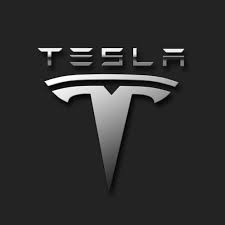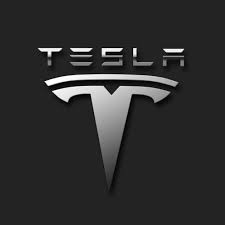
While the driver of a car in China that crashed contended that the sales staff sold the function as 'self-driving', overplaying its actual capabilities, Tesla said on Wednesday that one of its cars had crashed in Beijing while in 'autopilot' mode.
Data from the autopilot mode, a system that takes control of steering and braking in certain conditions showed that the car was in that mode, Tesla confirmed.
It was the driver's responsibility to maintain control of the vehicle, said the company, which is investigating the crash in China's capital last week. The driver's hands were not detected on the steering wheel in this case, it said.
Pressure on auto industry executives and regulators to tighten rules on automated driving technology was turned up after a fatal accident in Florida months ago and this crash, which is Tesla's first known such incident in China, follows the Florida incident.
Reuters reports that the autopilot function was engaged by Luo Zhen, a 33-year-old programer at a tech firm, as he often does on Beijing's highways.
His car hit a vehicle parked half off the road, Luo said who filmed the incident with a dashboard camera. Wile no injuries were caused, the accident sheered off the parked vehicle's side mirror and scraped both cars.
"The driver of the Tesla, whose hands were not detected on the steering wheel, did not steer to avoid the parked car and instead scraped against its side. As clearly communicated to the driver in the vehicle, autosteer is an assist feature that requires the driver to keep his hands on the steering wheel at all times, to always maintain control and responsibility for the vehicle, and to be prepared to take over at any time," a Tesla spokeswoman said in an emailed response to Reuters.
Luo, however said that Tesla's sales staff strongly promoted the system as 'self-driving' and blamed the crash on a fault in the autopilot system.
"The impression they give everyone is that this is self-driving, this isn't assisted driving," he said.
Reuters reported that Tesla’s clear cut statements that the system is not "self-driving" but an advance driver assistance system (ADAS) did not match the message conveyed by front-line sales staff after interviewing four other unconnected Tesla drivers in Beijing, Shanghai and Guangzhou.
The salespeople took their hands off the wheel while demonstrating when they described the cars' function in Chinese as "self-driving", a term the company generally avoids using in English, said these Tesla owners.
"They all described it as being able to drive itself," said Shanghai resident Mao Mao, who bought a Tesla Model S last year, reports Reuters.
On Tesla's Chinese portal, the term "zidong jiashi" appears several times. This word literally translates to mean "self-driving". There is room for confusion among consumers since it is also the term for airplane autopilot.
"We have never described autopilot as an autonomous technology or a 'self-driving car,' and any third-party descriptions to this effect are not accurate," the Tesla spokeswoman said.
(Source:www.reuters.com)
Data from the autopilot mode, a system that takes control of steering and braking in certain conditions showed that the car was in that mode, Tesla confirmed.
It was the driver's responsibility to maintain control of the vehicle, said the company, which is investigating the crash in China's capital last week. The driver's hands were not detected on the steering wheel in this case, it said.
Pressure on auto industry executives and regulators to tighten rules on automated driving technology was turned up after a fatal accident in Florida months ago and this crash, which is Tesla's first known such incident in China, follows the Florida incident.
Reuters reports that the autopilot function was engaged by Luo Zhen, a 33-year-old programer at a tech firm, as he often does on Beijing's highways.
His car hit a vehicle parked half off the road, Luo said who filmed the incident with a dashboard camera. Wile no injuries were caused, the accident sheered off the parked vehicle's side mirror and scraped both cars.
"The driver of the Tesla, whose hands were not detected on the steering wheel, did not steer to avoid the parked car and instead scraped against its side. As clearly communicated to the driver in the vehicle, autosteer is an assist feature that requires the driver to keep his hands on the steering wheel at all times, to always maintain control and responsibility for the vehicle, and to be prepared to take over at any time," a Tesla spokeswoman said in an emailed response to Reuters.
Luo, however said that Tesla's sales staff strongly promoted the system as 'self-driving' and blamed the crash on a fault in the autopilot system.
"The impression they give everyone is that this is self-driving, this isn't assisted driving," he said.
Reuters reported that Tesla’s clear cut statements that the system is not "self-driving" but an advance driver assistance system (ADAS) did not match the message conveyed by front-line sales staff after interviewing four other unconnected Tesla drivers in Beijing, Shanghai and Guangzhou.
The salespeople took their hands off the wheel while demonstrating when they described the cars' function in Chinese as "self-driving", a term the company generally avoids using in English, said these Tesla owners.
"They all described it as being able to drive itself," said Shanghai resident Mao Mao, who bought a Tesla Model S last year, reports Reuters.
On Tesla's Chinese portal, the term "zidong jiashi" appears several times. This word literally translates to mean "self-driving". There is room for confusion among consumers since it is also the term for airplane autopilot.
"We have never described autopilot as an autonomous technology or a 'self-driving car,' and any third-party descriptions to this effect are not accurate," the Tesla spokeswoman said.
(Source:www.reuters.com)














